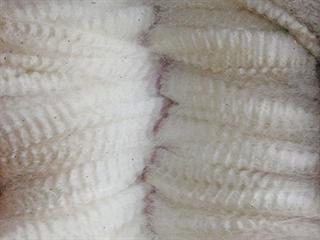Ardell Halvorson and his team at the US Agricultural Research Service have found maize excels at mopping up the nitrogen onion crops don’t use, saving on nitrogen fertiliser for about four consecutive crops. Alan Harman reports.
Increasing fertiliser doesn’t always increase profit, a 10-year study in the US found. Agricultural Research Service (ARS) scientists evaluated and compared management strategies for reducing nitrogen and nitrate nitrogen levels in soil and groundwater from 1998 to 2008.
The research, led by ARS soil scientist Ardell Halvorson, focused on irrigated cropping systems in the Arkansas River Valley, an agricultural region of Colorado with high levels of nitrate nitrogen in fields and groundwater – partially due to heavy application of nitrogen fertiliser and prevalence of shallow-rooted crops such as onions.
Onions and maize
The first study showed onions used only about 12% to 15% of the nitrogen fertiliser applied. Much of the remainder stayed in the top 1,8m of soil. “Over several years, these 1,8m had accumulated about 700 pounds of nitrogen per acre (128,76kg/ha) in our fields,” Halvorson says.
The next year, he and his colleagues planted maize on the same land and found it recovered about 24% of the fertiliser nitrogen applied to the onion crop. “There was so much available nitrogen, four consecutive maize crops were raised on the land before the level dropped below 100 pounds per acre (18,39kg/ha) in the top 1,8m,” he says.
It’s unusual to consider maize a nitrogen scavenger, because it’s generally thought to require a lot of fertiliser, but the unfertilised maize grown on that land yielded about 3 077kg/ha.
“That’s a very respectable maize yield, particularly for an unfertilised field,” Halvorson says.
By comparison, a plot fertilised with 46kg/ha nitrogen yielded about 3 347kg/ha, a small increase requiring significantly more time and money.
Significance for farmers
Additional maize studies following onions in rotation, showed maize was a good residual nitrogen scavenger crop.
The results suggest when managing fields with relatively high nitrogen levels, farmers benefit economically from reducing nitrogen fertiliser applications.
Arkansas Valley Research Centre manager Mike Bartolo says for many years over-application of nitrogen wasn’t much of an issue for vegetable growers because it was a small fraction of their overall production budget.
That’s changed as fertiliser and other production costs have risen and more farmers ask the ARS about efficient nitrogen use.
“Because we’d been working on the study for so long, we already had information available when local farmers started asking us,” Bartolo says. “The information was there, and was put to use right away.” |fw









